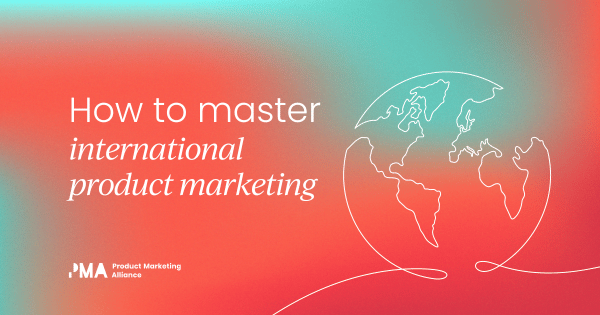Let's talk about emerging markets: the next big thing for SaaS growth. The business potential is huge. However, entering these markets isn’t as simple as putting up a product and waiting for users to line up at the gates. It's a little more complicated than that.
Having been in the SaaS game for a couple of years, I can say it takes a very specific go-to-market (GTM) strategy to penetrate these markets. It's important to consider all the relevant local dynamics and pricing sensitivities, and most importantly, speak directly to the businesses you are trying to serve.
In this article, I’ll share the playbook I've followed to successfully break into emerging markets. Spoiler alert: it‘s not rocket science, but you do need to get out of the "one-size-fits-all" mindset and embrace the uniqueness of each market.
Let's get into it.
1. Localize like you mean it
Ever tried explaining a joke that just didn't land because someone didn't get the cultural reference? That's what it feels like when you try to enter an emerging market without localizing your product.
Localization isn’t the same as translation. Though translation plays a role, true localization involves adapting your product to suit the business environment of your local market. This goes beyond language and includes considerations such as payment methods, features tailored to local needs, and other everyday realities of the local market, all of which should be incorporated into your product.

Is the marketplace seeing inconsistent internet access? Then offline capabilities are essential. Companies launching in regions with spotty connections – such as parts of rural India and parts of Southeast Asia – should focus initially on building a "lite" version of their app or product.
For example, Uber launched a "lite" version of its app in India and Southeast Asia. The app was designed with users who have low-end smartphones and very slow data speeds in mind. Uber realized that the full-fledged app would never work well in these markets, so it adapted to local needs, resulting in a rapid expansion of its user base.
But localization isn’t just about high-tech specifications. Cultural differences matter, too. For example, how businesses negotiate contracts, deal with payments, and even communicate varies enormously from region to region. In some markets, for example, face-to-face contact or use of a local partner is a better way to establish trust than relying purely on online interactions.
Why this matters
You want your product to feel built for that market, not hastily shoehorned in. A product that has been adapted is more lovable, more trustworthy, and more likely to be adopted.
Actionable tip
Conduct market research on business challenges specific to your target region. What do they value most – cost savings, security, or speed? Tailor your product offering to address those concerns.
2. Message for real people
Ever read a tech firm’s website copy and thought, "What are they even selling?" Yeah, me too. Messaging is one place where many SaaS companies trip up – especially those in less tech-savvy emerging markets.
In established markets, it's fair to assume that businesses understand the rudiments of cloud computing or software automation; in emerging markets, however, that's a dangerous assumption. In those regions, SaaS is often very new to many companies. Therefore, highly technical messaging is more likely to confuse your target customers than inform them.
Here are a couple of tips to prevent you from falling into this trap:
- Cut the jargon: Avoid buzzwords and overly technical language. Instead of saying, "Leverage AI to streamline workflows," say, "Manage calls, emails, and texts all in one place." The latter describes vividly what your product actually does – and if you want to catch a non-techie crowd, simplicity always wins out.
- Speak to pain points: If your product is going to save a business time, talk to that. Rather than relying on the well-worn phrase "increase productivity," communicate in terms like this: "Your customer support team will solve tickets 30 percent faster thanks to routine requests being automated." This is specific, relatable, and tells them exactly what your product is going to do.
The beauty of this approach in a place like Brazil, for example, is that you’re likely to encounter outdated systems that impede customer support operations. Your messaging needs to hone in on how your product solves that problem, rather than trying to paint with broad brushstrokes.
Why this matters
Vague or too-technical messaging leaves consumers scratching their heads. You want your audience to picture themselves using your product. The clearer your messaging is, the more likely they are to act.
Actionable tip
Always ask yourself, "Would my grandmother understand this?" If the answer's no, dumb down the messaging. Make clear, direct, and specific what your product can do and why your audience should care.
3. Build partnerships that open doors
Here's one reality I've learned about emerging markets – trust is everything. You’re an outsider and businesses may not be willing to invest in a new product. So what’s the best way to build trust? Step forward, local partnerships.
Local resellers are partners who also have a relationship with your ideal customer. So, instead of directly selling your product, you can leverage their existing relationships to build trust. This strategy works especially well in places where foreign products are seen as risky. Local partners can help with navigating regulations, connecting you with key decision-makers, and providing product support.
Industry associations are a vital part of this strategy. Government-backed digitization programs are very rapidly catching up in India and Brazil. So, if you can match up your product with these initiatives, you’ll immediately add credibility to your brand and open the doors to larger clients. Government and industry endorsements carry a lot of weight in these regions and can make or break your entry.
Let’s look at an example. Microsoft Azure succeeded in India partly because of the alliances it established with local companies. The firm built partnerships with local organizations through which it distributed and implemented the cloud services it was offering. Building partnerships at this level made it easier for businesses to embrace Microsoft's technology.
Why this matters
Trust through partnerships helps you break into new markets faster with less friction. It's about building relationships, not just making sales pitches.
Actionable tip
Go looking for local resellers, VARs (value-added resellers), or integrators with operations in your industry. Make it a win-win for them with exclusive distribution rights or revenue-sharing agreements.
4. Pricing: Be flexible, be local
Pricing in emerging markets is a completely different ballgame. Companies here don’t have humongous budgets, yet they do need robust solutions. In such cases, flexible pricing models can be your best friend.
Providing a freemium model allows small businesses to explore your product before committing to a full subscription. This approach works well for companies that may be reluctant to invest upfront, as it eliminates risk and builds trust. Once users are engaged with your product and see its value, converting them into paying customers becomes much easier.
Another critical factor is supporting local currencies and payment methods. Payment difficulties are often a major barrier to entry, but by offering options tailored to local markets, you can simplify the onboarding process. In countries like India and Brazil, for instance, enabling payment through systems like UPI or Boleto Bancário is crucial to success.
Price is often the biggest challenge for businesses entering emerging markets. If flexible options are provided, you diminish the risk for potential customers, making it easier for them to say yes to your product.
Actionable takeaway
Determine the most popular local payment methods in the market and ensure your platform supports them. The fewer barriers to payment, the better your chances of successful conversion.

Closing thoughts
While emerging markets are the new frontier for SaaS, they come with certain challenges. Localizing the product, simplifying your messaging, forming partnerships, and adapting pricing and payment options will all do you a world of good on the path to gaining those exciting new markets.
The beauty of emerging markets is that there is still much room to maneuver for those who wish to invest time and effort into trying to understand them. And who knows? Maybe your next great SaaS success story will come out of a developing market.


















 Follow us on LinkedIn
Follow us on LinkedIn





.svg?v=1abcb94374)